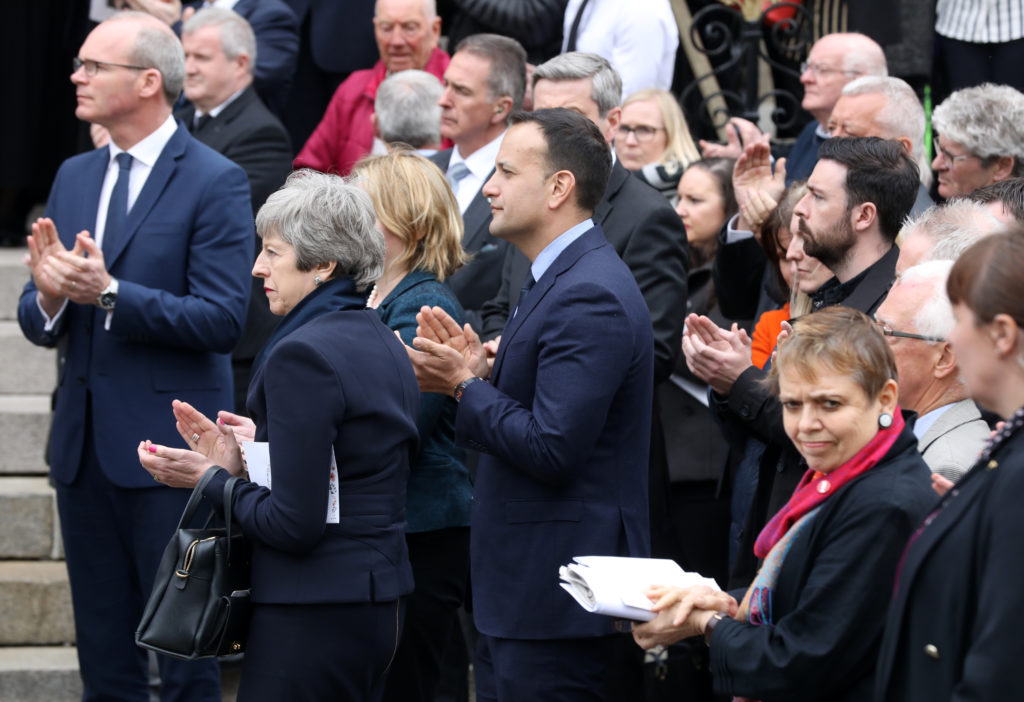MY FRIEND Lyra McKee died from a gunshot wound and became a symbol of a post-Troubles generation.
She was a young lesbian and a freelance journalist starting to establish a reputation.
One night in April 2019 she stood watching a riot in Derry.
Dissident republicans who had rejected the peace deal of 1998 were throwing stones and petrol bombs at police officers who had come into the Creggan estate to make arrests.
Riots of this kind were common during the period of the Troubles, generated by both republican and loyalist communities, often with the police as the main target.
I watched many riots as a young journalist as Lyra did that night, standing behind police or army lines or occasionally on the sidelines for a clearer view, depending on how safe I felt there.
On that night in Derry a man came forward with a pistol and fired at the police. One of his bullets struck Lyra in the head.
She then became a symbol of change because this was not supposed to happen.
The violence was meant to be behind us. Most of those who had led the violence of the past agreed on that. And Lyra was seen as part of a post conflict generation.
She would have been watching that riot perhaps because she had never or rarely seen such a thing. She would have regarded it as a throwback to an awful time.
 British prime Minister Theresa May applauds with Taoiseach and Fine Gael leader Leo Varadkar and mourners as the hearse leaves the church after the funeral of murdered journalist Lyra McKee at St Anne's Cathedral in Belfast (Pic: Rolling News)
British prime Minister Theresa May applauds with Taoiseach and Fine Gael leader Leo Varadkar and mourners as the hearse leaves the church after the funeral of murdered journalist Lyra McKee at St Anne's Cathedral in Belfast (Pic: Rolling News)Her symbolic importance was such that her funeral at St Anne’s cathedral in Belfast was attended by the then Prime Minister Theresa May and several dignitaries including the Northern Irish First Minister, Arlene Foster.
Her writings were republished, and one particular piece was seen as speaking for her whole generation.
As a lesbian writing to her younger self she had said: “It won’t always be like this. It’s going to get better.”
The tragic irony of how she had died was that it seemed to affirm that the awfulness continued despite her hopes and confidence.
And the starkness of that seemed to reinforce a determination that her vision would be fulfilled, that her death could not be pointless, that there had to be a Northern Ireland free of violence and prejudice in which a new generation had put the past behind them.
Young people today in Northern Ireland seem divided between those who regard themselves as a fruitful new generation untainted by the past and those who retain the anger and suffer inherited trauma.
Both often seem naive to me, as inevitably young people will when trying to respond to events that took place before they were born.
Some say they are not like the generation of their parents which made a mess of things. Some carry grief for what their families suffered and struggle to understand a society that has moved on.
Take Liadan Ní Chuinn who has just published an extraordinary collection of short stories that the critics are raving about.
Liadan is a pseudonym and there is no public disclosure over who she or he is. The name is female.
The Irish Times has said of Every One Still Here that it deserves to be considered “among the best Irish books of the 21st century”.
That’s one hell of an endorsement.
The stories are largely about generational trauma, featuring young characters who agonise over the legacy of the Troubles and relate the deaths of older relations to the stress and violence of those days.
The book is brilliantly written. An energetic imagination relates characters and situations vividly and movingly.
There is a coherent and authentic young voice throughout.
In the closing story a character Rowan confronts an older person, Shane who doesn’t want to dwell on the past and tells him he’ll get over it.
Rowan is furious and the older character is saying that the past is behind us and best left there.
This presents us with a counter to the image of Lyra McKee who is taken to symbolise the generation that has moved on.
There can be no question that Liadan is a major artist, an impressively evocative writer but there is naïveté and warped perspective here too.
That last story ends the book with a passionate litany of many of those who were killed by British soldiers during the Troubles, many of the soldiers being defended by their own officers and by government ministers; few were charged and convicted of murder.
The scandal of murders by soldiers is well recorded yet few have ever been held accountable.
But Ní Chuinn’s vision of the cause of conflict presents the British army as the main source of grief.
And this book is not alone in thinking like that. The First Minister, Michelle O’Neill, who has said that there was no alternative to the IRA campaign, has recently spoken of how she and those around her were moved by the horror of young men being killed by soldiers.
That conviction that the primary evil, the most damnable source of grief and grievance was the British army may be reality for some but what is missing here is context. Most of the killing was done by the IRA and by loyalist paramilitary groups.
How can that simply be forgotten or discounted as irrelevant?
There is danger in that blindness for that simplistic account of our past is what drives the dissident republicans still, the ones who couldn’t compromise for peace, the ones who shot Lyra McKee.

